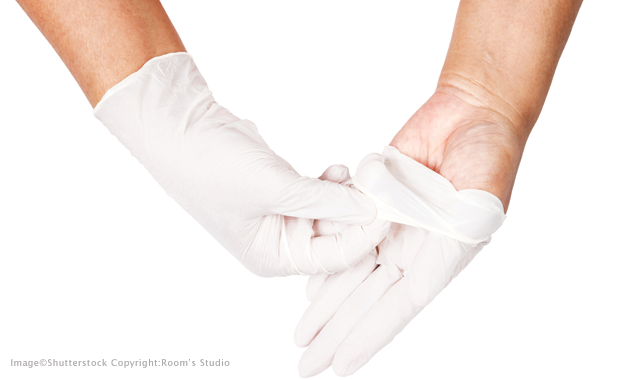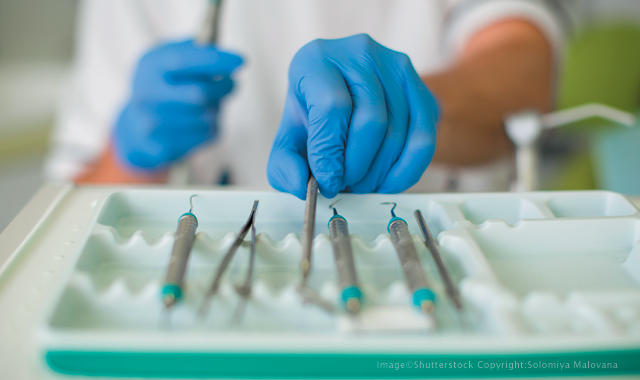5 ways you’re putting your patients – and staff – at risk with poor infection control policies
Even the most responsible dental practices can make these common mistakes.
It should go without saying that thoughtful infection control measures are necessary in every dental practice. The protocols are in place to protect everyone.

However, too often – whether it be laziness or ignorance – staff members are overlooking common items that can put both themselves and their patients at risk.
Read more: 10 major infection control risks
Here are five unnecessarily risky yet common behaviors.


1. Going to work sick
Many entries on this list seem like simple common-sense considerations. For instance, Joyce Moore, RDH, an infection control consultant and clinical instructor at Bristol Community College in Fall River, Massachusetts, observes that too often clinicians are going into work when they’re ill.
More from the author: 6 ways bulk fills are changing restorative dentistry
“We know that in all workplaces contagious employees risk getting other employees sick when they go to work,” Moore says. “Interestingly, in the November 2017 American Journal of Infection Control, there was a report saying that four in 10 healthcare professionals, while experiencing influenza-like symptoms, actually went to work. We know that if we are going to work sick, we risk getting the patient sick, we risk getting the staff sick, we risk getting all their families sick. And then older patients at the practice tend to have chronic diseases, and it causes them to be immunosuppressed.”
It seems like healthcare professionals especially would be more mindful of the dangers of going to work while sick. However, there tends to be plenty of excuses.
“Healthcare professionals often will say, ‘I wasn’t feeling bad enough,’ ‘I didn’t think I was contagious,’ ‘There’s nobody to cover for me,’ or ‘I couldn’t do without my pay,’” Moore says. “There are a lot of reasons why people go to work sick.”



PPE
Personal protective equipment (PPE) is a must-have for clinical staff. That is, it’s key in the war against the spread of infection (not to mention it’s mandated). However, often the gear isn’t worn properly, such as not wearing protective clothing over street clothes during a patient treatment that could create spray or spatter.
“Even if dentists and staff change into scrubs when they arrive at the practice, they should protect the scrubs with an outer garment if the patient treatment could produce spray or spatter,” says Mary Borg-Bartlett, president of SafeLink Consulting.
“If staff members go to the front desk or the reception area and lean against the counter, and they’re chatting with the front desk staff, they may not have their gloves on, they don’t have their mask and they don’t have their eyewear on, but the contamination they have on their lab coat is now all over the front counter,” Moore adds.
Trending article: What you NEED to know about single-use instruments
PPE should be appropriately worn in the clinical area. Wearing it after a procedure has taken place only increases the chance to spread contamination.
“When we wear PPE outside the clinical area, we run the risk of contaminating items,” Moore says. “We can contaminate paperwork, we can contaminate other items that other people are going to touch. People think PPE is like Superman’s cape, but it’s not.”
Additionally, how PPE is put on and taken off also matters.
“The donning and the doffing of PPE is very important,” Moore says. “If you’re taking off your gloves, and, with your clean hands, touching the outside of your contaminated lab coat, now your hands are dirty. There is a set of steps to follow in order to reduce the likelihood that you are to get that debris on you and then cross-contaminate other things you’re going to touch. There is a sequence, and if you’re out of sequence, you’re really putting yourself at risk.”
The Centers for Disease Control and Prevention explains the correct order in which PPE should be put on and taken off.



Hand hygiene
We learned the importance of washing our hands in grade school. But, for some reason, this is another overlooked area when it comes to infection control policies.
“Hand hygiene significantly reduces the likelihood of transmitting organisms to patients and staff,” Moore says. “We also know that noncompliance can cause healthcare-associated infections. It’s the simple things that we do: touching door knobs, touching telephones, and those practices with patient charts, all these things are touch points for other staff - and possibly patients - within the office.”
Read more: OSHA violations that you're making - and don't even realize
One may assume that gloves can take the place of good hand hygiene. That, too, is a common misconception.
“Gloves can have defects from degradation and wear during use that could allow microscopic organisms to enter the glove through holes,” Borg-Bartlett explains. “The best infection control practice is to wash your hands before donning gloves and after removal of gloves.”
Hand hygiene seems like the most common-sense way to prevent the spread of contamination. So, why aren’t people doing it often enough?
“People only do it about 40 percent of the time, and that tends to be the biggest issue: people don’t perform hand hygiene on a basis that is often enough,” Moore says. “People tend to say, ‘I don’t have time,’ ‘My hands are dry,’ ‘I use a hand rub,’ oe ‘The gloves protect me.’ So, there are a multitude of excuses. Our safety culture means to improve, and I think that we are starting to see that, especially in the medical field. In dental, I sometimes think people think gloves are a substitute for effective hand hygiene, and we know that that’s not the case.”



The little details
While there are some seemingly obvious sources of contamination risk, other sources are not as obvious. For instance, paying attention to detail can help prevent the spread of infection.
“Storing the clean, unused gauze and cotton rolls on counters in treatment rooms during patient treatment,” Borg-Bartlett says. “These items should be placed in closed containers to prevent cross-contamination."
Trending article: Dentistry and the opioid epidemic: what you need to know
Failing to disinfect computer keyboards in treatment rooms between patients is also an issue, according to Borg-Bartlett.
“Keyboards should be stored in cabinets or drawers away from spray or spatter during patient treatment,” she says. “Another way to avoid contamination of the keyboard is to place a protective cover over the keyboard that can be disinfected between patients. There are also the clean wipe medical keyboards and washable keyboards available for healthcare.”



Untrained staff reprocessing instruments
Some staff may be doing more harm than good in their efforts to help. For instance, if a member of staff isn’t adequately trained on a task, then he or she shouldn’t be attempting it.
“At an office that I used to work at, the receptionist was lovely, and if we were running a little bit behind, she would often come into the instrument reprocessing area and help out,” Moore says. “With that, you run the risk of someone who’s not been trained, who may not be wearing the appropriate PPE, may not know how to safely dispose of sharps, may not realize that packaging has to be labeled and closed in a certain way. So, they may be helpful, or trying to be helpful, but sometimes they might be putting the patients at risk.
More from the author: Why good disease prevention is critical
“If things aren’t being done properly, we could have instruments that are not sterilized appropriately, and then, of course, we don’t want the staff to be injured or harmed by not following protocols that those of us who have been trained know and understand the rationale behind,” she adds.
What if front desk staff, for instance, wants to be cross-trained to work in the instrument reprocessing area? It’s not as easy as just showing them how to do it.
“Typically, your licensed staff, your hygienists, your dentists, your assistants, they are mandated, by many of the states, to do infection control or OSHA training yearly,” Moore explains. “If you want somebody back in that reprocessing area, they should be taking that class. They should also be doing hands-on training, having someone who is competent and can train them and assess their competency, and then any time you have a new piece of equipment or a change, everyone in the office who is involved in instrument processing should be learning that. So, if you have a new ultrasonic, a different sterilizer, a new handpiece, things sometimes need to be changed as far as how they are processed.”
